#sir terence conran
Text

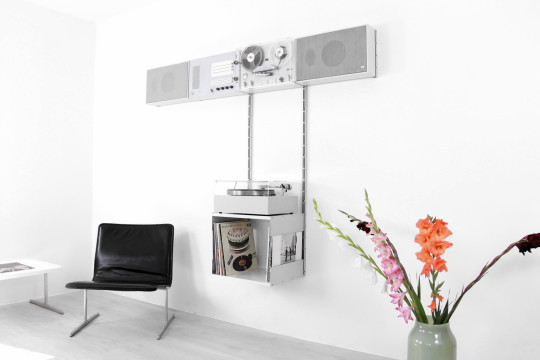

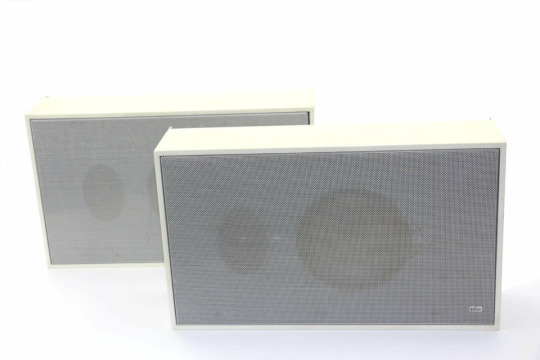


Dieter Rams for Braun, 1962/1963. Wall Mounted Audio 2/3 (components: control TS45, reel-to-reel tape recorder TG60, slim speakers L450, record player PCS5), (Image 1 credit: Matthew Donaldson)
Dieter Rams design ethos was very clearly codified by himself in ten legendary principles for good design:
1. Good design is innovative;
2. Good design makes a product useful;
3. Good design is aesthetic;
4. Good design makes a product understandable;
5. Good design is unobtrusive;
6. Good design is honest;
7. Good design is long-lasting;
8. Good design is thorough down to the last detail;
9. Good design is environmentally friendly;
10. Good design is as little design as possible
Dieter Rams, Nicolas Ghesquière, Sir Terence Conran, Lord Norman Foster, Jasper Morrison and Sir Paul Smith are among the design stars to give their support to the protection of design patent rights.
more info:
— https://braunaudio.de/en/braun-hifi-wall-unit-wandanlage-stereo-system-60ties/
— https://designwanted.com/design-icons-dieter-rams/
#dieterrams#design#braun#object#intemporal#contemporary#bauhaus#sound#equipment#music#product#productdesign#60s#70s#nicolas ghesquière#Sir Terence Conran#Lord Norman Foster#jasper morrison#paul smith#wallpaper magazine#patent#industrial design
27 notes
·
View notes
Text
Mystery Solved! Pippa Middleton and James Matthews have purchased Sir Terence Conran's previous estate in Berkshire: Barton Court.
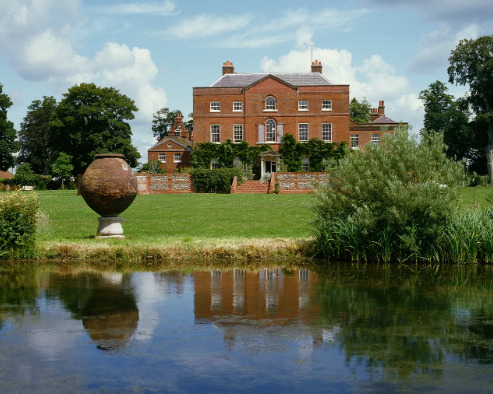
Reports about the Princess of Wales' sister Pippa's new estate in Berkshire have been quite vague, but today I finally found the planning permits.
The Matthews paid £15 million for Barton Court, located in Kintbury, Hungerford, Berkshire.
"Barton Court was built in 1772 for Admiral Lord Dundas: a typical, red-brick, early Georgian house of five bays with a projecting central open-pedimented entrance front, enhanced by round-headed windows in the upper storeys."
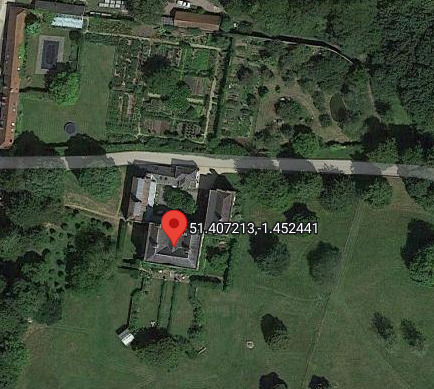

The top yellow star in the right part of the above map is the estate where Michael and Carol Middleton live in Bucklebury, and the solid red dot on the left is the location of James and Pippa Matthews' new estate. Close enough for a short car drive to visit, but far enough apart to allow each family some private time.
The planning permit request is for "Relocation of an outdoor swimming pool and construction of a tennis court within the walled garden, and conversion of a potting shed to associated changing room and plant room."
Below is the celebrated walled garden that will be replaced with tennis courts and possibly a very large swimming pool:

Sir Terence Conran was a famous British designer who passed away in September 2020. He founded the Habitat and Conran shops. He was also renowned for designing restaurants, office buildings and stores. Conran ran several restaurants and wrote more than 50 books about design.

House and Garden UK did a nice feature on the property with many color photos taken by Princess Margaret's ex-husband, if you're curious about the interior of Pippa's new home.
From the article: "In earlier days a stone-flagged hallway ran from the door to the stairway between the enclosing walls of adjacent rooms. These rooms have now been gutted to provide a combined hall and living room of vast area: over a hundred feet in length." Looks like the original tile is still in place.

Apparently, some of the family of Sir Terence Conran was very upset that his estate was sold, as it was said to have been his dream for the estate to remain in the family.
"Both the house and the estate, according to one visitor, were to be 'overseen by the Conran family'. But no longer: I can reveal that the house has been sold for £15 million, despite Conran's vision, which included selling fruit and vegetables from greenhouses and a massive walled garden.
Members of the family appear to be in the dark about quite why the sale has gone ahead. One tells me that it is the executors of Conran's will who are selling the property, not his widow, Lady Conran.
The interior designer Vicki Davis married Sir Terence in 2000 at Chelsea Town Hall. His children — Sebastian and Jasper by his second wife, Superwoman author Shirley Conran, and Tom, Sophie and Ned by his third, cookery writer Caroline Herbert — only learned of it later.
That was no accident: Conran's children, it was playfully said, needed an appointment to see him.
The executors of his will decline to comment. But I can disclose that Vicki has already left the house and a new family has moved in."
Little did we know in June 2022 that it was Pippa Middleton and her family who bought the estate!
But here is another article interviewing Conran's widow, Vicki. She felt the house was too much for one person to maintain, and that none of his many children would want the upkeep. Conran apparently did not die of Covid either. It's a good article, detailing his vast collections and giving you a better idea of what he was like. After living there 50 years, Conran's widow was given 8 weeks to pack up everything and move out by the new owners...
Here is the planning application map showing the property outline:

Interestingly, the large buildings to the left of Barton Court are actually a very large custom furniture workshop and retail store. The owner, Sean Sutcliffe, "met Terence Conran and a firm friendship was made over a shared interest in making, wood, design and sustainability. They founded Benchmark together and our workshop and showroom are situated in the grounds of Terence’s country home."

That should prove very interesting for Pippa and family - perhaps those who are royal watchers might plan to do some furniture shopping in the near future! I'm sure, however, that the Matthews family will have plans in place to secure the perimeter of their new estate - or perhaps Mr. Matthews will just buy Benchmark Furniture outright and have its premises moved. Pretty sure he can afford it, since they recently sold their Chelsea mansion for £22.5 million, £5.5 million more than he paid for it.
#pippa matthews#pippa middleton#british royal family#princess of wales#barton court#british stately homes#sir terence conran#berkshire
59 notes
·
View notes
Photo

38 notes
·
View notes
Photo
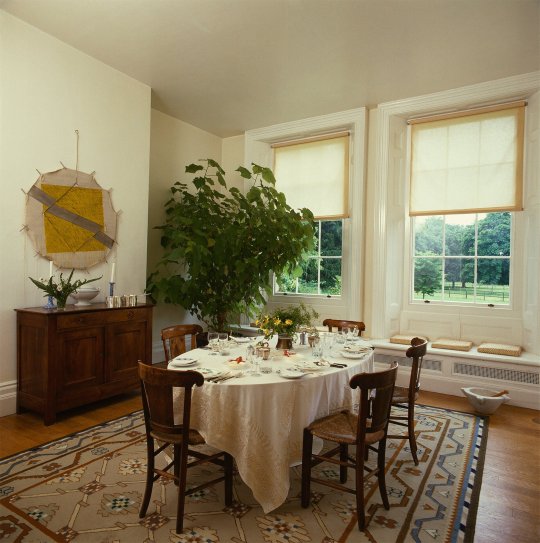

Sir Terence Conran's country house shot by Lord Snowdon
The Conrans' country house, Barton Court, was built in 1772 for Admiral Lord Dundas: a typical, red-brick, early Georgian house of five bays with a projecting central open-pedimented entrance front, enhanced by round-headed windows in the upper storeys. Barton Court is neither a stately home, demanding ceaseless expenditure for its upkeep, nor, on the other hand, a country cottage too small for the lively Conran circle.
#sir terrence conran#lord snowdon#Antony Armstrong-Jones#Photographe#conran#photographer#deco#interior#house design#decoration#home design#house#terrence conran
148 notes
·
View notes
Text

A 'cocoon' American cherry and American red oak desk
Commissioned by Sir Terence Conran, designed by Sebastian Cox, and made by Benchmark Furniture
The desk flanked by two bookcases and enclosed within curved red oak woven screens.
Bonhams
49 notes
·
View notes
Photo
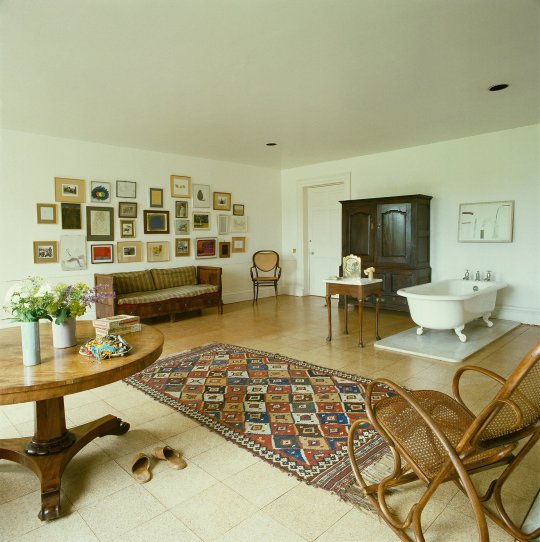
Sir Terence Conran's country house
30 notes
·
View notes
Text


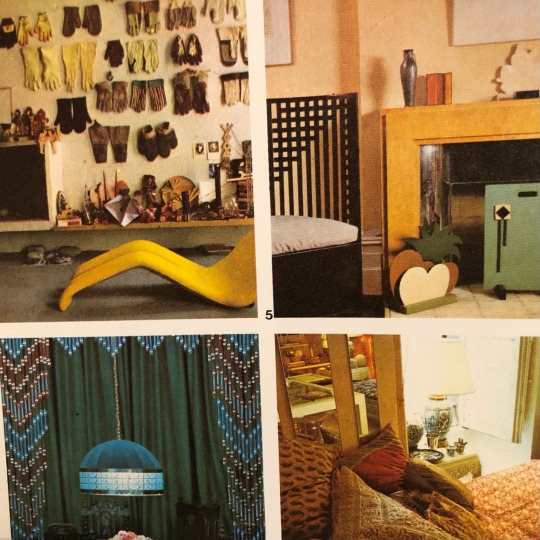
The House Book by Sir Terence Conran, Chairman of Habitat Mothercare PLC.
19 notes
·
View notes
Quote
Good design starts from the premise that living is more than just a matter of existing, and that everyday things which are both effective and attractive can raise the quality of life.
Sir Terence Conran
6 notes
·
View notes
Text
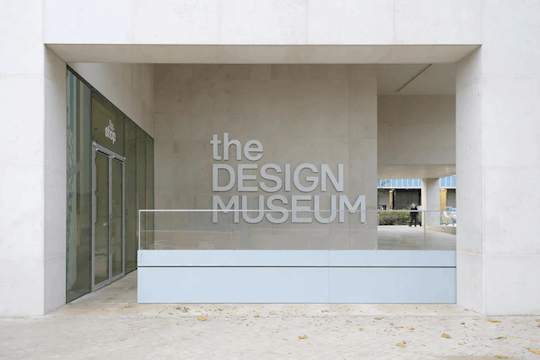
Architectural Alchemy: Decoding the Anagram of the Design Museum and OMA's Grand Design
The Design Museum, a sanctuary of contemporary design, unfolds its narrative through a linguistic maze. An anagram transforms it into 'het DEIGNS USE MUM,' weaving a tale that transcends architecture, sexuality, and the echoes of memory.
At its core, the museum is an homage to Sir Terence Conran's vision, founded in 1989. Relocating to Kensington in 2016, it underwent a metamorphosis orchestrated by architectural virtuosos OMA, Allies and Morrison, and Arup. John Pawson's design prowess turned it into a 10,000 sqm masterpiece—a testament to interdisciplinary collaboration.
But what about the anagram? 'het DEIGNS USE MUM' unravels like a secret code. 'USE' reflects the museum's purpose—utilizing spaces for a global design hub. 'DEIGNS,' a play on 'designs,' mirrors the diverse exhibitions. 'MUM,' initially a nod to maternal influence, evolves into the silent force shaping the museum's essence.
Enter OMA—the grandmother of architectural innovation. This powerhouse, led by Reinier de Graaf, joins forces to restore the post-war British architecture gem. The OMA touch, radical engineering, and meticulous detailing culminate in a grand design. OMA, like a wise grandmother, imparts architectural wisdom through the ages.
The slang 'Het' adds a layer—heterosexuality. In this architectural narrative, it mirrors the diverse attractions of the museum, attracting people of all orientations. 'Deign,' an Old English term, speaks to OMA's condescension to elevate architectural standards—a nod to dignity.
'MUM' takes us to familial roots, echoing 'Mum's the word.' Silence, a trait of OMA's designs and the museum's exhibits, speaks louder than words. 'Oma,' a German term for grandmother, symbolizes architectural lineage. 'Grandmothers footsteps' lead us through memory lanes, connecting past and present.
In this journey of architectural alchemy, the anagram stitches together diverse threads—sexuality, design, memory, and OMA's grandeur. The Design Museum, a linguistic marvel, stands not just as a space for innovation but as a testament to the silent wisdom passed down through the architectural generations.
0 notes
Text
Interview with Jeremy Lee by Andy Lynes
To kick off cookbookreview.blog's coverage of this year's @AndreSimonAward I am thrilled to present an interview with culinary legend @JLQuoVadis that contains some exciting news for fans of 'Cooking'
Jeremy Lee is one of the shortlisted authors in the food category of this year’s Andre Simon Awards for his marvellous debut Cooking. Dundee born Jeremy Lee one of London’s most celebrated chef and heads up the kitchens at Quo Vadis restaurant and club in London’s bustling Soho. He was previously the head chef of Sir Terence Conran’s Blueprint Cafe in Shad Thames and at Euphorium in Islington…

View On WordPress
0 notes
Text
White Glove Triumph for Sir Terence Conran's Personal Collection at Bonhams
White Glove Triumph for Sir Terence Conran’s Personal Collection at Bonhams
London – Bonhams’ sale of Sir Terence Conran, The Contents of Barton Court, was 100% sold on Wednesday 14 December in New Bond Street, London. The sale, which included furniture, works of art, and decorative design objects from the design titan’s personal collection, made a total of £1,179,500, more than three times the pre-sale estimate.
The top lot of the sale was Sir Allen Jones’s…
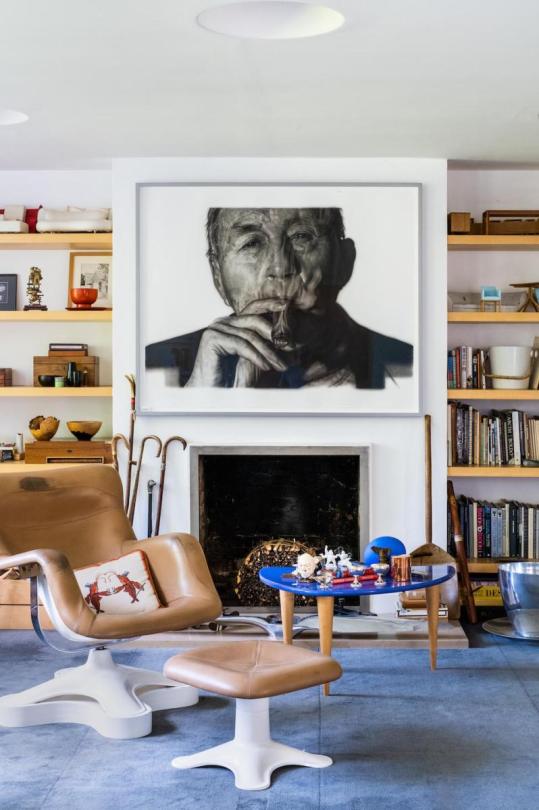
View On WordPress
0 notes
Text
https://www.bonhams.com/auction/28136/sir-terence-conran-the-contents-of-barton-court/
Auction of Terence Conran contents of Barton Court
1 note
·
View note
Text
Auction Alert: Sir Terence Conran – The Contents of Barton Court
The contents of Barton Court, the home of Sir Terence Conran for over 40 years, go under the hammer on Wednesday 14th December 2022 from 10am. The sale of 394 lots takes place live from Bonhams on New Bond Street, London. Sir Terence (1931-2020) achieved a great deal in his 88 years; he began his […]
The post Auction Alert: Sir Terence Conran – The Contents of Barton Court appeared first on H is for Home Harbinger.
Related posts:
Auction alert: The Autumn Garden Auction
Auction alert: Lady Elizabeth Hart Collection and The Wallace Collection of Oriental Art
Auction Alert: Fine Interiors
source https://hisforhomeblog.com/auction-alert/auction-alert-sir-terence-conran-the-contents-of-barton-court/
0 notes
Text
Alan Fletcher Interview/Article Research
Reputations: Alan Fletcher
By: Rick Poynor
An interview with Pentagram’s ringmaster of paradox.
Rick Poynor: Why did you become a graphic designer?
Alan Fletcher: I always used to draw as a kid and when it came time to leave school, you were offered three options. You went to university, or you went into the army, or you worked for the bank. I didn’t fancy any of those and I learnt that if you went to art school you could get a grant. I studied illustration at Hammersmith art school for a year, then I discovered there were other art schools in London. Central School was very lively so I applied to go there.
RP: Colin Forbes was at Central; so were Derek Birdsall, Ken Garland and Terence Conran. Did you have a sense of almost evangelical mission towards design? Were you as a generation going to bring design to Britain?
AF: It was an evangelical mission, not necessarily to bring design to Britain, but to do design. It was that 1950s period which was fairly socialist-minded – hair-shirt and puritan. There wasn’t much work around and you would have been mad to become a designer if you weren’t passionate about it.
From Central I went to the Royal College of Art, where I managed to get a scholarship to Yale. Britain was very grey, boring place and America, from what I could see in the movies, was bright lights, Manhattan, Cary Grant and Doris Day.
RP: You seem to have had trouble making contact with inspirational people there – with Paul Rand, Saul Bass, Leo Lionni. Was that something you set out to do, or was it just a series of happy accidents?
AF: It was a bit of both. If you know the right people, you meet the right people. I happen to have been taught by pretty terrific people at most of the schools I went to – Anthony Froshaug, Henrion, Herbert Spencer, Herbert Matter, Josef Albers, Bradbury Thompson. When I was at Yale, Rand helped me by giving me the odd freelance from IBM and introduced me to other people. But you have to work at it. When I went to Los Angeles, I called Saul Bass from a public phone box and said “Sorry to bother you, sir. Can I come and see you and show you my portfolio?” I didn’t have any money, so he helped me by giving me freelance work.
RP: It seems as though you knew exactly where you wanted to go.
AF: Well, I think it’s the reverse. I couldn’t actually do anything else. I always thought I could design well as a student, but then I would find someone who could do it better. But it wasn’t so far off, it wasn’t unattainable, it was just difficult. So I was driven by my own inadequacy, probably. You’ve got to have an ego to be a designer. It’s a stupid job to have unless you’ve got that: undressing every day in front of some client who doesn’t necessarily share your enthusiasms.
RP: The American experience must have given you a headstart over people who had stayed in austerity in Britain.
AF: Everybody was still doing the same thing: little black and white jobs with eight point type. If it had a second colour it was red, or possibly blue. When I arrived back in London in the early 1960s it was with a portfolio of full colour jobs and ambitious hopes.
I had been back about six months when Bob Gill rang, saying he had been given my name by Aaron Burns in New York. We went out for supper and after about three months we decided we should start our own little design office with Colin Forbes. We didn’t get a single job for the first month. Then we got some Penguin book jackets. We used to go out to a café with the brief for one Penguin book jacket and do it over coffee, share the book jacket like a bone.
RP: At Pentagram you have the controlling influence on everything you do. The assistant designers support your vision. Do you think the best graphic design will always come from a single author?
AF: I think it depends on your personality. Art directors orchestrate other people to produce something that satisfies them. That’s OK. And then there are other people sawing away on their violin. I’m up the violin end. A John McConnell likes an orchestra and he does it very well. I couldn’t do that: it would be totally confusion after about three minutes. But in the end the result is the same.
RP: With Pentagram you co-operated in the setting of a partnership that would give you the freedom to pursue your own interests and a secure company framework within which to do it.
AF: I’m a split personality. I do quite large, complex corporate identity jobs. I enjoy that, but I also enjoy sitting round doing my own little things, which are invariably the ones that don’t pay. The clients who do pay give you an opportunity to extract time and money for your own indulgences. That’s important. I think a lot of clients come to Pentagram because of the uncommercial jobs we do – calendars, Christmas books, the Pentagram Papers and so on.
RP: What else have you gained from the Pentagram arrangements?
AF: You can’t get away with anything in here, because someone is going to pass by something on your desk and say exactly what he thinks. You have to listen to it, because you respect his opinion. You don’t necessarily agree, but you are uncapable to kid yourself that the job is good if it’s only 80 per cent. But it’s very easy, if you’re tired and you can’t think of anything else, to convince yourself that you’ve solved it. So the partnership acts as an irritating self-protection system.
RP: You once told me that up until five years ago you felt inhibited in your designing. You knew in advance what you would or wouldn’t like and this influenced the solutions you were prepared to attempt.
AF: What I meant was that you have to throw away the crutches. When you know that you do a certain thing quite well there’s a temptation to keep doing it in that way. You become a graphic cliché.
Most designers suffer from inhibition and wanting to please. I didn’t wake up one morning and say “I’ve got to change my life”. I just thought: I’ve got to be less inhibited. If I think the right answer is to walk over a piece of paper with muddy shoes, or pick a typeface that everybody loathes but try to do something with it – that’s what I mean by uninhibited. I think a lot of designers talk like that, but the work ends up looking the same, which means they haven’t totally let go. I haven’t either.
RP: Design as you practise it seems to involve reading between the lines. When you use visual puns and rebuses, or pay with ambiguous images, that’s what you are encouraging the viewer to do.
AF: That, to me, is what design is. The rest of it is just layout. I’m quite broad about ideas: putting certain colours together could be an idea, or an optical idea. Every job has to have an idea. Otherwise it would be like a novelist trying to write a book about something without really saying anything.
I also like ideas that have further jokes – private ideas or jokes. I think the Polaroid poster is quite a good one. We were asked to do something on a new colour film and I thought that idea of a Rorschach test with colours would look quite pretty. What I really liked about it, though, was when someone said to me, “But what does it mean, Alan?” I just shrugged my shoulders and smiled.
RP: You don’t mind if there are aspects of design that people fail to grasp?
AF: It’s the extra three or five per cent, if you like. You’ve solved the problem – that’s difficult enough – but it’s not enough. I think what separates the designer sheep from the designer goats is to push it to the edge. Most clients don’t realise it and couldn’t care less even if they did, but it people who have a sensitive intelligence spot it, then that’s what gives it extra buzz.
RP: That’s a view of design that would be foreign to people who regard it as an adjunct to marketing – people who see design’s function as fulfilling the client’s brief as effectively as possible and stopping there.
AF: I treat clients as raw material to do what I want to do, though I would never tell them that. I try to solve their problems, but in solving their problems take an opportunity to find that extra twist that adds the magic. The art posters I did for IBM are a good example. IBM asked me to design a placard for their new Paris headquarters, which said a painting would shortly arrive for the space on the wall occupied by the placard. In response I did a series of posters interpreting the word “art” as defined by author or artist, and I put the line about the paintings in 6pt along the bottom. If I had answered the brief, they would have got a straightforward placard.
RP: Why do you use your own handwriting so much in the posters?
AF: I like to reduce everything to its absolute essence, because that is a way to avoid getting trapped in a style. I only started writing instead of typesetting to save money, or maybe because I was inhibited before. You’ve got to keep on breaking down the barriers. Of course you could argue that I’m creating my own style and that’s a weakness and I should try harder. I think you would probably be right.
I always think of writing as drawing. Every letter is a symbol, so you can begin to play games. I don’t treat writing as calligraphy. The more controlled and raw it is, the more interesting it becomes
RP: What qualities of thought or sensibility make for a good graphic designer?
AF: There are elegant ways of doing something and inelegant ways. Sensitivity, though it sounds a bit fey. Thoughtfulness, I think you can look at a portfolio and see the obvious things: if they have idea or don’t have ideas, a sense of craft. Then there’s that quality … You hardly ever see it. You look at other designers’ work and you spot it, and they spot it, too: economy of thought, the oblique reference, charm and, above all, wit.
RP: Do you feel that the approach you and the other Pentagram partners have taken – avoiding the stock market, creaking an environment where you please yourselves rather than shareholders – has been vindicated by the recent upheavals in the British design business?
AF: It’s not a question of vindication. I think everyone should do what they want to do. Every Pentagram partner in his own way is a hands-on person. They are all small boys who want to be patted on the head and told what a nice job they’ve done. What turns people on here is being proud of the job, not how much money they earned for it. I can’t see a suit coming in from the City and saying, “Look, you can’t do this. You’ve got to do that.” They’d throw him out of the window.
RP: You’ve been working on a book about design for seven years. When will you publish it?
AF: It’s really a scrapbook. I wrote down some thoughts on a whole series of things like “taste”, “perception”, “imagination”, “visualisation” – pigeon-holes. I took all the quotes, clippings, observations and images I’d collected, including my notes, and put them in the pigeon-holes. There are lots of things written about the visual business that are not explained very clearly. I’m using words like pictures.
The rest of my life has lots of deadlines, so I’ve no intention of that happening to something I’m doing for myself. I’d like to see it published, because I think that would be an achievement, but if it isn’t, it isn’t going to kill me. I’m trying to learn something more about myself, actually. I’m not given to self-analysis, but I am given to insatiable curiosity
First published in Eye no. 2 vol. 1, 1991
Reference: https://www.eyemagazine.com/feature/article/reputations-alan-fletcher
0 notes
Text
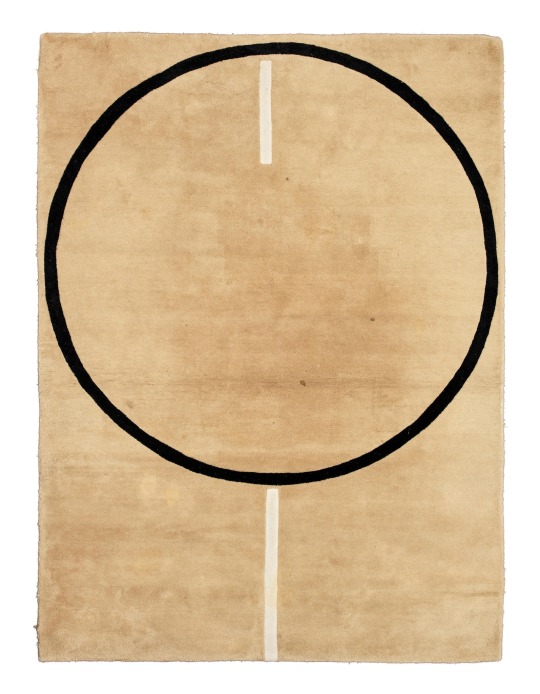
A Maru Natural carpet designed by Sir Terence Conran.
Bonhams
47 notes
·
View notes
Text
Interview with Alan fletcher
Rick Poynor: Why did you become a graphic designer?
Alan Fletcher: I always used to draw as a kid and when it came time to leave school, you were offered three options. You went to university, or you went into the army, or you worked for the bank. I didn’t fancy any of those and I learnt that if you went to art school you could get a grant. I studied illustration at Hammersmith art school for a year, then I discovered there were other art schools in London. Central School was very lively so I applied to go there.
RP: Colin Forbes was at Central; so were Derek Birdsall, Ken Garland and Terence Conran. Did you have a sense of almost evangelical mission towards design? Were you as a generation going to bring design to Britain?
AF: It was an evangelical mission, not necessarily to bring design to Britain, but to do design. It was that 1950s period which was fairly socialist-minded – hair-shirt and puritan. There wasn’t much work around and you would have been mad to become a designer if you weren’t passionate about it.
From Central I went to the Royal College of Art, where I managed to get a scholarship to Yale. Britain was very grey, boring place and America, from what I could see in the movies, was bright lights, Manhattan, Cary Grant and Doris Day.
RP: You seem to have had trouble making contact with inspirational people there – with Paul Rand, Saul Bass, Leo Lionni. Was that something you set out to do, or was it just a series of happy accidents?
AF: It was a bit of both. If you know the right people, you meet the right people. I happen to have been taught by pretty terrific people at most of the schools I went to – Anthony Froshaug, Henrion, Herbert Spencer, Herbert Matter, Josef Albers, Bradbury Thompson. When I was at Yale, Rand helped me by giving me the odd freelance from IBM and introduced me to other people. But you have to work at it. When I went to Los Angeles, I called Saul Bass from a public phone box and said “Sorry to bother you, sir. Can I come and see you and show you my portfolio?” I didn’t have any money, so he helped me by giving me freelance work.
RP: It seems as though you knew exactly where you wanted to go.
AF: Well, I think it’s the reverse. I couldn’t actually do anything else. I always thought I could design well as a student, but then I would find someone who could do it better. But it wasn’t so far off, it wasn’t unattainable, it was just difficult. So I was driven by my own inadequacy, probably. You’ve got to have an ego to be a designer. It’s a stupid job to have unless you’ve got that: undressing every day in front of some client who doesn’t necessarily share your enthusiasms.
RP: The American experience must have given you a headstart over people who had stayed in austerity in Britain.
AF: Everybody was still doing the same thing: little black and white jobs with eight point type. If it had a second colour it was red, or possibly blue. When I arrived back in London in the early 1960s it was with a portfolio of full colour jobs and ambitious hopes.
I had been back about six months when Bob Gill rang, saying he had been given my name by Aaron Burns in New York. We went out for supper and after about three months we decided we should start our own little design office with Colin Forbes. We didn’t get a single job for the first month. Then we got some Penguin book jackets. We used to go out to a café with the brief for one Penguin book jacket and do it over coffee, share the book jacket like a bone.
RP: At Pentagram you have the controlling influence on everything you do. The assistant designers support your vision. Do you think the best graphic design will always come from a single author?
AF: I think it depends on your personality. Art directors orchestrate other people to produce something that satisfies them. That’s OK. And then there are other people sawing away on their violin. I’m up the violin end. A John McConnell likes an orchestra and he does it very well. I couldn’t do that: it would be totally confusion after about three minutes. But in the end the result is the same.
RP: With Pentagram you co-operated in the setting of a partnership that would give you the freedom to pursue your own interests and a secure company framework within which to do it.
AF: I’m a split personality. I do quite large, complex corporate identity jobs. I enjoy that, but I also enjoy sitting round doing my own little things, which are invariably the ones that don’t pay. The clients who do pay give you an opportunity to extract time and money for your own indulgences. That’s important. I think a lot of clients come to Pentagram because of the uncommercial jobs we do – calendars, Christmas books, the Pentagram Papers and so on.
RP: What else have you gained from the Pentagram arrangements?
AF: You can’t get away with anything in here, because someone is going to pass by something on your desk and say exactly what he thinks. You have to listen to it, because you respect his opinion. You don’t necessarily agree, but you are uncapable to kid yourself that the job is good if it’s only 80 per cent. But it’s very easy, if you’re tired and you can’t think of anything else, to convince yourself that you’ve solved it. So the partnership acts as an irritating self-protection system.
RP: You once told me that up until five years ago you felt inhibited in your designing. You knew in advance what you would or wouldn’t like and this influenced the solutions you were prepared to attempt.
AF: What I meant was that you have to throw away the crutches. When you know that you do a certain thing quite well there’s a temptation to keep doing it in that way. You become a graphic cliché.
Most designers suffer from inhibition and wanting to please. I didn’t wake up one morning and say “I’ve got to change my life”. I just thought: I’ve got to be less inhibited. If I think the right answer is to walk over a piece of paper with muddy shoes, or pick a typeface that everybody loathes but try to do something with it – that’s what I mean by uninhibited. I think a lot of designers talk like that, but the work ends up looking the same, which means they haven’t totally let go. I haven’t either.
RP: Design as you practise it seems to involve reading between the lines. When you use visual puns and rebuses, or pay with ambiguous images, that’s what you are encouraging the viewer to do.
AF: That, to me, is what design is. The rest of it is just layout. I’m quite broad about ideas: putting certain colours together could be an idea, or an optical idea. Every job has to have an idea. Otherwise it would be like a novelist trying to write a book about something without really saying anything.
I also like ideas that have further jokes – private ideas or jokes. I think the Polaroid poster is quite a good one. We were asked to do something on a new colour film and I thought that idea of a Rorschach test with colours would look quite pretty. What I really liked about it, though, was when someone said to me, “But what does it mean, Alan?” I just shrugged my shoulders and smiled.
RP: You don’t mind if there are aspects of design that people fail to grasp?
AF: It’s the extra three or five per cent, if you like. You’ve solved the problem – that’s difficult enough – but it’s not enough. I think what separates the designer sheep from the designer goats is to push it to the edge. Most clients don’t realise it and couldn’t care less even if they did, but it people who have a sensitive intelligence spot it, then that’s what gives it extra buzz.
RP: That’s a view of design that would be foreign to people who regard it as an adjunct to marketing – people who see design’s function as fulfilling the client’s brief as effectively as possible and stopping there.
AF: I treat clients as raw material to do what I want to do, though I would never tell them that. I try to solve their problems, but in solving their problems take an opportunity to find that extra twist that adds the magic. The art posters I did for IBM are a good example. IBM asked me to design a placard for their new Paris headquarters, which said a painting would shortly arrive for the space on the wall occupied by the placard. In response I did a series of posters interpreting the word “art” as defined by author or artist, and I put the line about the paintings in 6pt along the bottom. If I had answered the brief, they would have got a straightforward placard.
RP: Why do you use your own handwriting so much in the posters?
AF: I like to reduce everything to its absolute essence, because that is a way to avoid getting trapped in a style. I only started writing instead of typesetting to save money, or maybe because I was inhibited before. You’ve got to keep on breaking down the barriers. Of course you could argue that I’m creating my own style and that’s a weakness and I should try harder. I think you would probably be right.
I always think of writing as drawing. Every letter is a symbol, so you can begin to play games. I don’t treat writing as calligraphy. The more controlled and raw it is, the more interesting it becomes
RP: What qualities of thought or sensibility make for a good graphic designer?
AF: There are elegant ways of doing something and inelegant ways. Sensitivity, though it sounds a bit fey. Thoughtfulness, I think you can look at a portfolio and see the obvious things: if they have idea or don’t have ideas, a sense of craft. Then there’s that quality … You hardly ever see it. You look at other designers’ work and you spot it, and they spot it, too: economy of thought, the oblique reference, charm and, above all, wit.
RP: Do you feel that the approach you and the other Pentagram partners have taken – avoiding the stock market, creaking an environment where you please yourselves rather than shareholders – has been vindicated by the recent upheavals in the British design business?
AF: It’s not a question of vindication. I think everyone should do what they want to do. Every Pentagram partner in his own way is a hands-on person. They are all small boys who want to be patted on the head and told what a nice job they’ve done. What turns people on here is being proud of the job, not how much money they earned for it. I can’t see a suit coming in from the City and saying, “Look, you can’t do this. You’ve got to do that.” They’d throw him out of the window.
RP: You’ve been working on a book about design for seven years. When will you publish it?
AF: It’s really a scrapbook. I wrote down some thoughts on a whole series of things like “taste”, “perception”, “imagination”, “visualisation” – pigeon-holes. I took all the quotes, clippings, observations and images I’d collected, including my notes, and put them in the pigeon-holes. There are lots of things written about the visual business that are not explained very clearly. I’m using words like pictures.
The rest of my life has lots of deadlines, so I’ve no intention of that happening to something I’m doing for myself. I’d like to see it published, because I think that would be an achievement, but if it isn’t, it isn’t going to kill me. I’m trying to learn something more about myself, actually. I’m not given to self-analysis, but I am given to insatiable curiosity
First published in Eye no. 2 vol. 1, 1991
0 notes